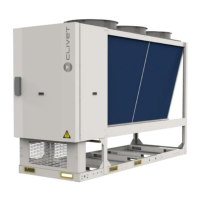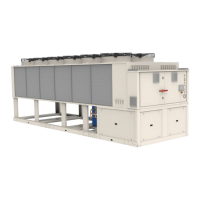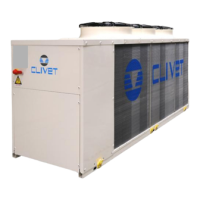Do you have a question about the CLIVET WSAN-YES 20.2 and is the answer not in the manual?
Guidance on manual, safety, risks, intended use, installation, and maintenance.
Covers modifications, breakdown handling, and user training.
Covers data updates, unit identification, serial number, and R32 refrigerant details.
Guidelines for hydraulic design, water quality, and freeze prevention.
Requirements for electrical lines, data from serial labels, and signals.
Setting up remote control and configuring modular units.
Wiring diagrams for modular unit controllers.
Modbus enabling, communication specs, connections, and unit addressing.
Detailed register maps for reading/writing and modular units.
Further mapping of Modbus registers for various unit functions.
Table mapping Modbus error codes to decimal values.
Overview, preliminary checks, and refrigerant/water circuit inspections.
Detailed steps for unit start-up and checks on various components.
Unit start-up, remote control checks, and pump manual start test.
How master unit manages start-up sequence in cooling and heating examples.
Overview of control panel buttons and basic operations like lockout and ON/OFF.
Procedures for selecting mode and adjusting temperature settings.
Explanation of icons for mode, status, timer, and alarms.
Procedures for alarm reset, general precautions, and master unit protection conditions.
General safety for R32 units, area checks, and refrigerant presence.
Safe work procedures, cooling component checks, and electrical safety.
Precautions for component handling, leak detection methods, and brazing safety.
Detailed steps for safe refrigerant recovery, evacuation, and purging.
Safety for charging refrigerant, dismantling, and refrigerant recovery practices.
Best practices for recovery, tank handling, and equipment labelling.
Precautions for refrigerant leaks and safety for compressor/oil removal.
Maintenance requirements, certification, and specific warnings for R32 refrigerant.
Procedures for refrigeration circuit work and R32 refrigerant characteristics.
Identifies general risks, danger zones, and risks during handling and installation.
Risks related to electrical parts, panels, and refrigerant pressure.
Risks from live electrical parts and moving components.
Risks related to refrigerant handling, heat sources, and hydraulic parts.











